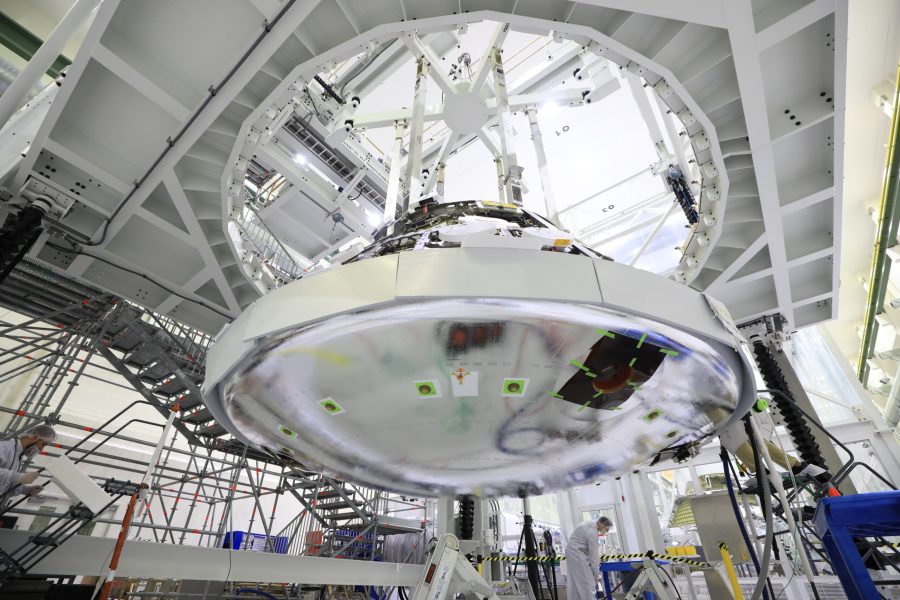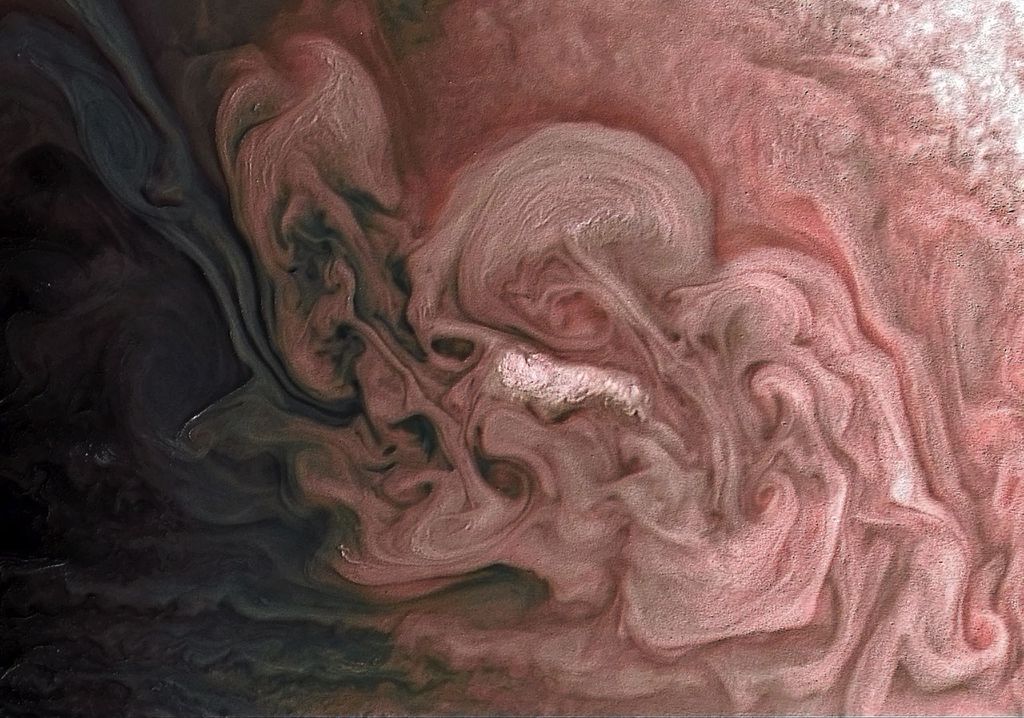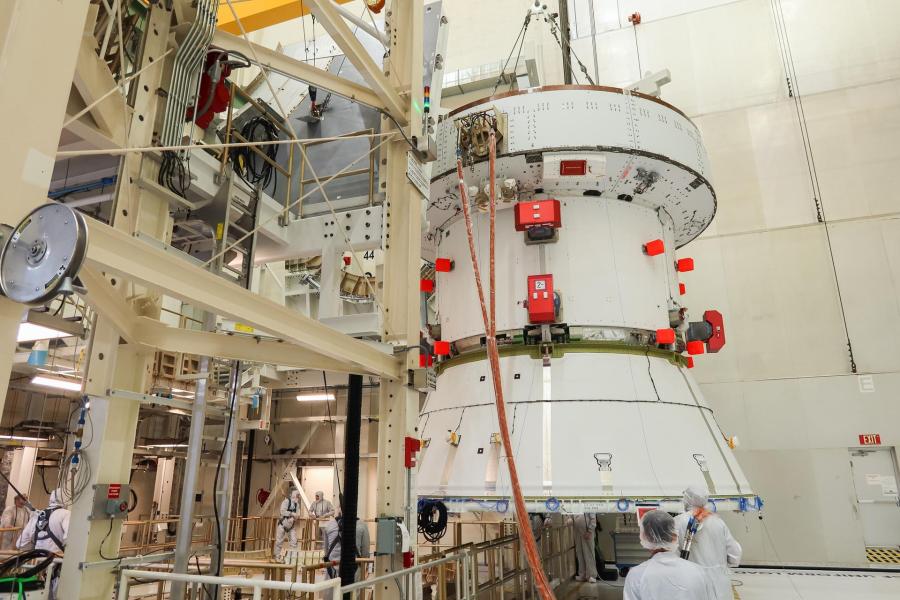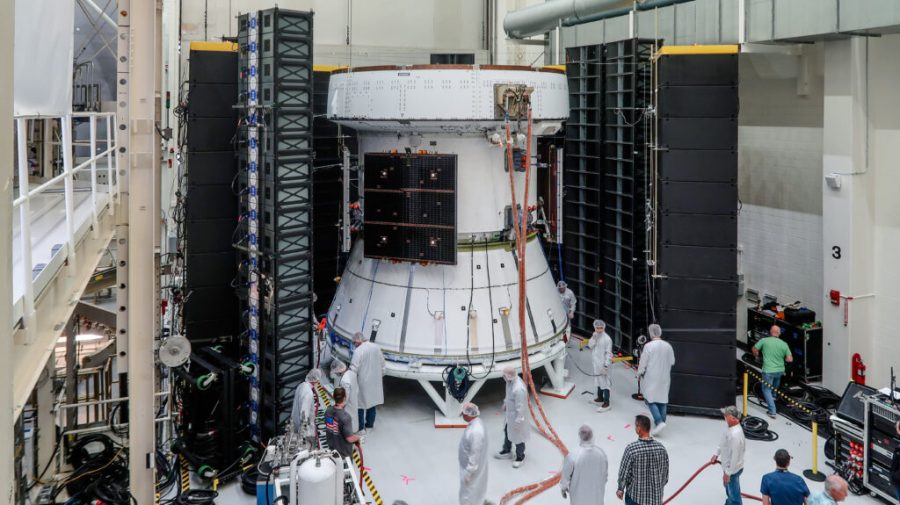On June 25, 2023, teams completed installation of the heat shield for the Artemis II Orion spacecraft inside the high bay of the Neil Armstrong Operations and Checkout Building at NASA’s Kennedy Space Center in Florida. The 16.5-foot-wide heat shield is one of the most important systems on the Orion spacecraft ensuring a safe return …
Orion Heat Shield Installed for NASA’s Artemis II Mission


































